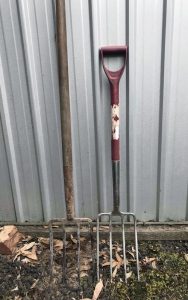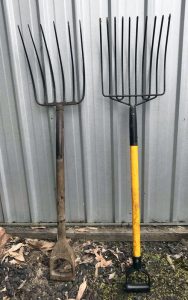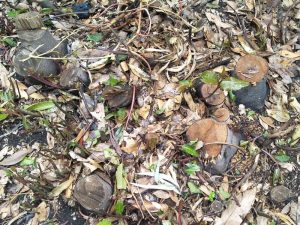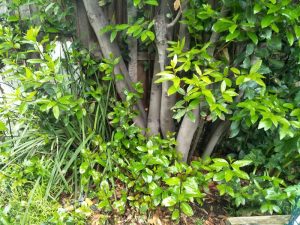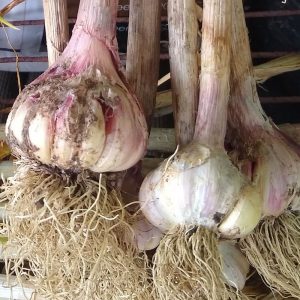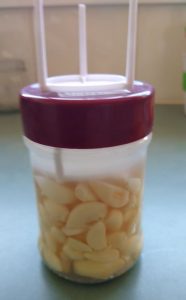Thanks to all the people who have contributed to this week’s newsletter: Astrid Judge, Helen Corney, Jian Liu, Jon Buttery, Julie O’Brien, Meg Montague, Pam Jenkins, Simone Boyd and Stuart Rodda.
It is great when people contribute material for the newsletter. The material can be anything so long as it is food-related: ask a question, provide a tip, discuss an issue, submit a photo, send in a recipe, etc. Email us with your contribution(s).
This week’s regular activities
I think that all the events below are actually happening but I can’t guarantee it so you might want to check in advance if you are planning to go.
Food swaps
Saturday: Box Hill South, Brunswick East, Fairfield and Forest Hill.
Sunday: St Andrews, Surrey Hills / Balwyn and Warranwood.
Community gardens
Thursday: SEEDs (Brunswick) and Whittlesea.
Friday: West Brunswick.
Saturday: Links (Lalor) and Thrive (Diamond Creek).
Sunday: Bellfield, Fawkner Food Bowls, Incredible Edible Eltham (Spring planting), Northcote Library and Pentridge (Coburg).
Monday: SEEDs (Brunswick) and Whittlesea.
Next Wednesday: Span (Thornbury).
Farmers’ markets
Thursday: Alphington Midweek Farmgate.
Saturday: Coburg.
Sunday: Alphington, Eltham and Yarra Valley.
North East Region Permaculture (NERP) at Eltham Farmers’ Market
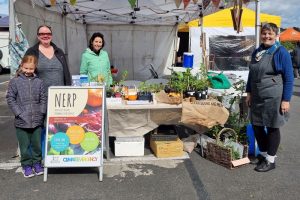 North East Region Permaculture (NERP) is one of the more active permaculture groups in North East Melbourne. Mainly operating in Nillumbik and the surrounding suburbs, they share skills and knowledge plus organise workshops and garden visits. My understanding is that they now have a monthly stall at Eltham Farmers’ Market on the 2nd Sunday of each month where anyone can talk to them about their activities. At the last stall on 14th November, they gave away a variety of veggie seedlings.
North East Region Permaculture (NERP) is one of the more active permaculture groups in North East Melbourne. Mainly operating in Nillumbik and the surrounding suburbs, they share skills and knowledge plus organise workshops and garden visits. My understanding is that they now have a monthly stall at Eltham Farmers’ Market on the 2nd Sunday of each month where anyone can talk to them about their activities. At the last stall on 14th November, they gave away a variety of veggie seedlings.
World Soil Day at Eltham Farmers’ Market on 5th December
World Soil Day, a United Nations initiative, is held annually on 5th December to focus attention on the importance of healthy soil. This year the campaign is ‘Keep soil alive, protect soil biodiversity‘. In Australia, Healthy Soils Australia is promoting the importance and benefits of healthy soil via their Soil Week Australia website.
Newsletter reader Bev Middleton is a Director of Healthy Soils Australia and is taking a leading role in the campaign. As Bev says, “Healthy soil matters, more than we think. It matters for our food, our food security, health, clean water, eco-services and our climate.”
To mark World Soil Day, Bev and others will have a stall at Eltham Farmers’ Market on 5th December. This is one of a series of stalls at the market for local food and sustainability groups to present their programs, last week’s being NERP (as discussed above).
Bev is also giving an online presentation called Healthy soil, healthy plants, healthy people on Wednesday, 1st December, 8-9.30pm.
Why and how to grow oca (by Jian Liu)
[Jian, from Camberwell, is an occasional contributor to this newsletter who has now set up her own website, called Melbourne Foodforest, where she writes articles to help people to develop their own food forests. One of her recent articles is about why and how to grow oca. She has also set up an associated YouTube channel where one of the videos is about growing oca. Below is a summary of the article and video.]
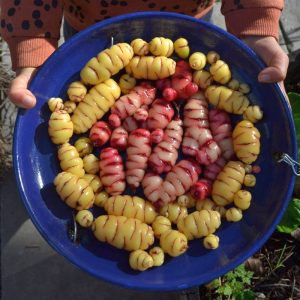 Oca is a root vegetable that you may not have heard of. It is a hardy, nutritious and tasty tuber which tastes quite similar to potato but is a little more nutty and (some say) lemony. It can be steamed and mashed, baked or fried, just like potato or, unlike a potato, it can be eaten raw. It has a low Glycaemic Index. As per the photo, it looks like a witchetty grub!
Oca is a root vegetable that you may not have heard of. It is a hardy, nutritious and tasty tuber which tastes quite similar to potato but is a little more nutty and (some say) lemony. It can be steamed and mashed, baked or fried, just like potato or, unlike a potato, it can be eaten raw. It has a low Glycaemic Index. As per the photo, it looks like a witchetty grub!
As a plant, it is hardy, easy to grow, highly productive and can be grown in part shade. The hardest part is finding some tubers to get started. It is a warm season vegetable which should be planted in late winter or early spring. Like potato, it is a perennial grown as an annual. It likes compost but not too much manure or nitrogen, as this promotes leafy growth over tuber growth.
As the plant grows, it is good to top up with compost as more tubers will form wherever the stems touch the soil.
Only harvest when all of the foliage has yellowed. This generally occurs around the shortest day of the year in winter. Dig around carefully with your hands to unearth the brightly coloured tubers. Wash, clean and dry in the sun, then cure in the sun for up to a week for sweeter tubers. Then store away somewhere airy and dry, like a pantry or in a shed.
Read other articles by Jian on our website.
Large forks (by Stuart Rodda)
[This is the third of Stuart’s articles about large gardening tools, the first two having been on shovels/spades and soil levellers.]
A fork is defined here as a tool with multiple straight tines (prongs). They are usually used for digging soil, or for lifting loose bulk materials such as hay, mulch or compost, because the narrow tines penetrate these materials readily. The spacing between the tines determines how well a fork will retain loose material, i.e. if it will fall through the gaps when lifted. Sharper or tapered tines penetrate more easily than broad ones.
You would typically choose a ‘spading’ or digging fork rather than a shovel when digging previously worked soil such as a garden bed, and when you don’t want to cut your produce (carrots, potatoes) or worms in half. A fork is also a better initial choice when the soil is not moist, because the tines penetrate easier than a shovel. A fork is also an essential tool for turning compost due to the difficulty of driving a shovel into such a mixture. Finally, ‘lifting’ root crops is best done with a fork by digging underneath the roots to be harvested and letting the soil fall through the tines.
Your fork can be long handled or short handled (the latter usually with a D-shaped handle for better control). With the long handle, you have plenty of leverage and reach, and it doesn’t matter how short or tall you are. Smaller forks require less effort but they take longer to get through the job.
Features to look for when buying a fork include: tines which are strong and springy or hardened so they won’t bend under your force; a strong but lightweight handle; and an overall size appropriate to your job. Sharp pointed tips on the tines give good penetration but can be hazardous for unprotected feet. A digging fork ideally has the tines emerging from a horizontal ‘frame’ so that you can use your weight through your foot to drive the tines into the soil. Wooden handles can be strong, but hardwood can be heavy, and cheaper wood may leave splinters in your hands. Hollow fibreglass and steel handles are also made.
Specialised forks for hay, manure or mulch have smooth and tapered tines which slide easily into and out of the material being moved (see photo). A cheaper mulch fork with tines looking like thick wire works well on coarse mulch, and doubles as a rather crude rake for levelling your mulch layer after placing. Forks with sharp pointed tines can be a nuisance for moving mulch when the tines are constantly ‘spearing’ pieces of mulch.
Jon’s podcast of the week
As someone who has two oaks on his nature strip – one adopted from the park behind before they put a bike path through and the other a refugee from the former Borlase Reserve – I found this podcast about oak trees fascinating. It explained why my oaks took so long to start growing really well, the wide variety of insects that they support and why oaks are interesting trees.
Say “no” to bitter lettuce (by Simone Boyd)
[Simone is owner of the online veggie seed shop, Heirloom Naturally.]
[Watch this video, where Simone discusses bitter lettuce.]
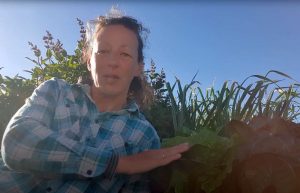 What is your go to ingredient for a quick and easy salad in Summer? If you answered ‘lettuce’, you are not alone. In Australia, and probably around the world, lettuce is enjoyed throughout the Summer months as a light, tasty and refreshing vegetable.
What is your go to ingredient for a quick and easy salad in Summer? If you answered ‘lettuce’, you are not alone. In Australia, and probably around the world, lettuce is enjoyed throughout the Summer months as a light, tasty and refreshing vegetable.
But did you know that lettuce is really a cool season crop? Whilst we can, and do, grow it all year round, lettuce prefers the cooler seasons and will need to be nurtured during the warmer months.
A strong sign that your lettuce is struggling in Summer, is a bitter taste. Whilst bitterness is not a bad thing – it stimulates the appetite and digestive juices – if you are not accustomed to the taste, it can be off putting and lead to a crop destined for the compost heap.
Bitter lettuce is generally caused by one of two things:
- Not enough water.
- Too much heat.
So growing lettuce in Summer becomes a challenge as it is generally hot, with little rainfall.
To avoid bitter lettuce, it is essential to ensure that your lettuce crops receive around 25mm of water each week (this is true for most vegetables). If mother nature is not providing this amount of rainfall, you will need to water your crops. Whilst we cannot change the level of heat that we receive during Summer, we can mitigate it by providing our lettuce with shade, particularly from the afternoon sun. Covering with shade cloth, or planting on the Eastern side of a taller growing crop such as tomato, will offer your lettuce some relief from the hot sun. Commercial growers often mist their lettuce crops with water three or four times per day during the height of the Summer to offer a similar cooling effect.
I have also read that one may reduce the level of bitterness in lettuce by popping it in the fridge for a couple of days prior to eating – worth a try!
The history of the local Chinese market gardens
Watch this 30 minute video about the early 20th Century history of the Chinese market gardens in Northcote, Coburg and Heidelberg.
No you didn’t know (sigh)
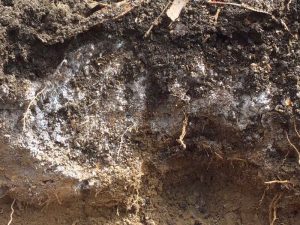 Sometimes we receive really comprehensive and thoughtful responses to newsletter readers’ questions. Last week was a good example, with Bruno Tigani’s response to Yennie Yong’s romanesco failure and Brendon Bolton’s response to Eliza McCumstie’s contaminated herbicide (a belated thanks to Bruno and Brendon!).
Sometimes we receive really comprehensive and thoughtful responses to newsletter readers’ questions. Last week was a good example, with Bruno Tigani’s response to Yennie Yong’s romanesco failure and Brendon Bolton’s response to Eliza McCumstie’s contaminated herbicide (a belated thanks to Bruno and Brendon!).
Other times, however, we receive no responses at all. Such is the case with Nada Cunningham’s question from last week, where she asked what was the greyish, white cakey material in her soil (see photo) and what should she do about it. Would anyone like to rectify the situation by responding this week? Email your responses.
Do you know?
Blotchy rhubarb leaves
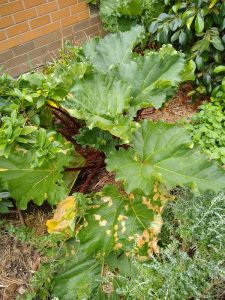 Pam Jenkins has written in: “My rhubarb is planted in an alkaline bed, even though I understand that it would prefer acid soil. It has been doing okay there for at least 10 years but every time I give it some plant food the leaves go blotchy like those in the photo. In the past, I have been feeding it with pellets of dynamic lifter or similar and thought that perhaps it was too strong and was burning the leaves. This time I fed it cow manure and ended up with the same result. Any ideas of what is happening?” Email your responses.
Pam Jenkins has written in: “My rhubarb is planted in an alkaline bed, even though I understand that it would prefer acid soil. It has been doing okay there for at least 10 years but every time I give it some plant food the leaves go blotchy like those in the photo. In the past, I have been feeding it with pellets of dynamic lifter or similar and thought that perhaps it was too strong and was burning the leaves. This time I fed it cow manure and ended up with the same result. Any ideas of what is happening?” Email your responses.
Suckering bay trees
Meg Montague has written in: “I would appreciate some advice on how to control one bay tree and how to destroy the roots of another. I foolishly allowed both bay trees to get very tall, around 10 metres. I have now cut one down but am having trouble destroying its roots and stopping it from suckering (see left hand photo). The other I am keeping but again it madly suckers and cutting these off only seems to encourage it to grow more (see right hand photo). What can I do to keep it under control?” Email your responses.
Want to know more about noisy miners and how to deter them?
 Banyule Council has just published a really interesting 45 minute video entitled noisy miners – bullies in your own backyard by Professor Mike Clarke (who lives in Rosanna).
Banyule Council has just published a really interesting 45 minute video entitled noisy miners – bullies in your own backyard by Professor Mike Clarke (who lives in Rosanna).
To illustrate the breadth of the presentation, one 4 minute section of the video (from minute 8:50 to minute 12.50) discusses their breeding habits. As per the diagram, noisy miners are communal breeders who operate as ‘brotherhoods’ (aka ‘coteries’). The brotherhood apparently comprises a number of related males (usually brothers, according to Prof. Clarke) together with a number of unrelated females. Whilst the females just feed their own young, the males often help out at multiple nests (because, being related to the chicks, it is genetically in their interest to so do). When the male chicks grow up, they become members of the brotherhood. By contrast, when the female chicks grow up, they fly away and try and find vacancies in other brotherhoods.
Much of the video discusses what, if anything, can be done to lessen the dominance of noisy miners in home gardens and thus increase the likelihood or other small songbirds. Whilst Prof. Clarke has a number of suggestions, his overall message appears to be that you can’t really do anything about it.
What I am doing with my garlic (by Pam Jenkins)
My garlic has continued to fall over so I decided to dig it up a little early to save what I could.
Some of the garlics had rotten centres but some usable cloves. I gave the bulbs a good blast with the hose to wash away as much of the fungus as I could before separating out the cloves. Knowing that they weren’t going to keep well, I decided to ferment them. The skin on each clove is still soft but needs to be removed.
After some research, I decided to use this simple recipe. After 3 days, I moved the jar to an external storage area as it really does make the house smell strongly of garlic! After 4 to 6 weeks of fermenting, I will be able to store it in the fridge, where it will keep for months. Fermenting makes the flavour more subtle so, when using it in a recipe, double the suggested quantity of cloves. After using the cloves, the pickling brine can be used in ‘dirty’ cocktails, salad dressings or for making garlic butter.
I am holding the cloves under the brine with the little support ‘table’ found in takeaway pizza boxes. It works really well!
Other garlics had a little black fungus growing on the outside but it hadn’t encroached far between the cloves or got into the centre of the stems. With these, I have decided to ferment some in honey to create a sore throat treatment. Here is a recipe for honey fermented garlic.
The remainder of the garlic will be plaited for long term storage in the cool dry area under the house. Here is Penny Woodward’s instructions on how to plait garlic.
You need to check your plaited garlic regularly to make sure that the cloves aren’t showing signs of sprouting. If they are, and I don’t want to plant them out, then I dehydrate them. The dehydrated garlic rehydrates really well and tastes as strong as fresh. Once it has been dehydrated, it can be left as it is, powdered or stored in oil. Storing in oil has the advantage of being soft and easy to use and you also get a byproduct of garlic-infused oil. When preparing for dehydrating, you need to slice the bulbs so that the water can escape. Remember how many slices per clove as it is easy to put too much into your recipe. Over doing the powder is even more of a risk!
Which link was clicked most times in the last newsletter?
The most popular link last week was Jaimie’s video about linden trees.
Joke (or pun) of the week
Knock, knock.
Who’s there?
Cash.
Cash who?
No thanks, I prefer peanuts!
Upcoming online events
Urban agriculture and anthropogenic trace metal contaminants; Friday, 19th November, 1-2.30pm; free.
This is the 30th Memorial Leeper Lecture and the keynote speaker is Professor Mark Taylor, who is the Chief Environmental Scientist at EPA Victoria. He will discuss such questions as: Do I know what’s in my backyard soil? Can I send my soil somewhere to have it tested? Is my backyard safe for honeybees, or chickens, or my veggie patch? He will also discuss why we need to measure urban contaminants and how we can empower citizens to act through initiatives like the VegeSafe program that he initiated at Macquarie University.
Healthy soil, healthy plants, healthy people; Wednesday, 1st December, 8-9.30pm; $15.
To celebrate World Soil Day on 5th December, this workshop will explore the connections between how our agricultural system produces our food and what this means for the food we eat. They will touch on what nutrient dense food means and explore the connection with healthy soil. Presenter: Bev Middleton. Organised by Sustainable Macleod.
Previously announced
- Edible garden tour With Karen Sutherland; Thursday, 18th November, 11am-midday; free.
- Productive gardens workshop with Jian Liu; Thursday, 18th November, 7.30-8.30pm; $30; organised by Open Gardens Victoria.
- Cooking demonstration: san choy bao and mango sago pudding; Thursday, 25th November, 7-8pm; free.
- Keeping backyard chooks with Felicity Gordon; Saturday, 27th November, 3-4pm; free.
- Zen permaculture, starting at the kitchen sink: de-clutter and reset your life; Sunday, 12th December, 2-3.45pm; $donation.
- Take your recipe to retail; Wednesday, 15th December, 9-10am; $50.
Upcoming face-to-face events – not cooking
Many of these events may be restricted to fully vaccinated people only.
Community gardening in Moreland; Sunday, 21st November, 10am-midday; free; Brunswick West.
Moreland Community Gardening and Moreland Council will be talking about food growing in Moreland and will have some community garden stories from gardens in the neighbourhood. You will be split into two groups: those who are new to community gardening (to discuss what goes into starting a community garden) and with those familiar with community gardening (who will discuss opportunities, challenges and support).
Farm lunch; Sunday, 21st November, 12.45-2.45pm; $75; Alphington.
Join the East African Sisters (Fahan and Safiya) at the Melbourne Food Hub Farm for a multi-course vegetarian lunch featuring fresh, seasonal produce grown at the site. They will also showcase Somali and Ethiopian food, culture and community. Have a guided farm tour with Clare Harvey. Listen to speakers Kelly Donati (from Sustain) and Rasha Tayeh. All the profits from this event will be donated to a Gofundme campaign connecting Palestinian food producers and female agripreneurs with grants to expand their businesses and farm practices. Organised by Melbourne Food Hub.
Plant sale – fundraiser for Boroondara Greens; Saturday, 27th November, 10am-midday; free; Kew East.
Span Sustainability Fest; Saturday, 27th November, 11am-3pm; free; Thornbury.
There will be five events during the day organised by Span Community House:
- An upcycle market (called reLOVE): For makers of upcycled products to showcase and sell items that they make from pre-loved materials. Organised in partnership with Darebin Hard Rubbish Heroes and Transition Darebin. Just turn up.
- 2 community composting workshops, at midday-12.45pm and 1-1.45pm. Presenter: Katrina Forstner from Buzz & Dig. You will need to book your spot.
- 2 bee bath making workshops, at midday-1pm and 2-3pm. Bee baths will be constructed using discarded table legs and pre-loved plastic, pot-plant saucers donated and/or rescued from hard rubbish and you will take one home. Presenter: Kelly Armati from Shiner Creative Workshops. You will need to book your spot.
Spring plant sale at Gunyah garden; Saturday, 27th November, 11am-3pm; free; Pascoe Vale South.
Spring plant sale of edible and other native plants including: old man saltbush ‘de Kock’, chocolate lily, bulbine lily, yam daisy, flax lily, mat rush, kangaroo grass, hop goodenia, native violet, running postman, native mint (chocolate and spearmint flavours), bottlebrush red, kurrajong and lilly pilly (dwarf variety). Organised by Edible Eden Design (Karen Sutherland).
Grow your own mushrooms; Wednesday, 1st December, 1.30-2pm; $25 ($50 per hour); Greensborough.
Ros, from Here For Ya Mate will show you the basics for growing your own mushrooms. Learn about different edible mushrooms, grain spawn, substrates, fruiting bags and how you can grow them at home indoors. Organised by Greenhills Neighbourhood House.
Northside Wines – Christmas market; Sunday, 12th December, 1-7pm; $22; Northcote.
They will have around 100 wines for you to sample and learn about, with several of the wine makers on hand. The ticket price includes a free tasting glass that is yours to take home. Unlimited sampling. Organised by Northside Wines.
Previously announced
- Bush foods & herbs for courtyards & balconies: Thursday, 18th November, 6.30-9pm; $55 ($22 per hour); Bulleen Art and Garden.
- Beginners backyard beekeeping; Saturday, 20th November, 10am-3pm; $220 ($44 per hour); CERES.
- Building wicking beds using recycled materials: Saturday, 20th November, 10.30am-midday; $97 ($64 per hour); Fitzroy.
- Sprouting gardens: Saturday, 20th November, 1-2.30pm; $20 ($14 per hour); Fitzroy.
- Edible weeds: Saturday, 20th November, 3-4.30pm; $22 ($14 per hour); Bulleen.
- Intro to permaculture (two sessions), Sunday, 21st November and Sunday, 28th November, both 10am-3pm; $220 ($22 per hour); CERES.
- Backyard beekeeping basics; Sunday, 21st November, 1-3pm; $70 ($35 per hour); CERES.
- Bakery Hill whisky distillery tour and tasting: Wednesday, 24th November, 4-5.30pm; $59 ($40 per hour); Bayswater North.
- Mould – a cheese festival: Friday, 26th November, 4.30-8.30pm, Saturday, 27th November, 11am-3pm and 4-8pm, and Sunday, 28th November, 11am-3pm; $49 (includes all cheese tastings); Abbotsford.
- Food photography; Saturday, 27th November, 9.30am-12.30pm; $109 ($36 per hour); Eltham.
- Beeswax wraps; Saturday, 27th November, 10am-midday; $75 ($38 per hour); CERES.
- Flavours of Coburg food tour: Saturday, 27th November, 10am-1pm; $49 ($16 per hour); Coburg.
- Oktoberfest 2021: Saturday, 27th November, midday-10pm; $45; Brunswick East.
- Setting up a worm farm: Saturday, 27th November, 2-3pm; free; Edendale.
- Growing nutrient dense food: Saturday, 4th December, 10am-3pm; $110 ($22 per hour); CERES.
- Beginners compost, worm farms and bokashi bins: Saturday, 4th December, 10.30am-midday; $67 ($44 per hour); Abbotsford.
- Make a blue-banded bee apartment block: Saturday, 4th December, 1-2.30pm; $65 ($44 per hour); Abbotsford.
- Beekeeping workshop: Saturday, 4th December, 2.30-5pm; $85 ($34 per hour); Brunswick East.
- Introduction to growing microgreens: Sunday, 5th December, 10am-3pm; $110 ($22 per hour); organised by CERES; Preston.
- Whittlesea community seed library opening: Thursday, 9th December, 10-11.30am; free; Whittlesea.
- Flavours of Coburg food tour: Saturday, 11th December, 10am-1pm; $49 ($16 per hour); Coburg.
- Edible weeds walk: Saturday, 11th December, 10.30am-12.30pm; $25 ($13 per hour); Brunswick East.
- Edible weeds walk: Saturday, 11th December, 1.30-3.30pm; $25 ($13 per hour); Brunswick East.
- Bakery Hill whisky distillery tour and tasting: Sunday, 12th December, 3-4.30pm; $59 ($40 per hour); Bayswater North.
- Bakery Hill whisky distillery tour and tasting: Sunday, 19th December, 2-3.30pm; $59 ($40 per hour); Bayswater North.
Upcoming face-to-face events – cooking
Many of these events may be restricted to fully vaccinated people only.
The art of fermenting; Sunday, 5th December, 2-5pm; $55 ($18 per hour); Hawthorn.
This class will focus on obtaining great gut health through fermented foods. You will learn how to make sauerkraut and other fermented produce. You will also look at ways to make it healthier and more delicious with the addition of different spices and seasonal vegetables. Organised by Hawthorn Community House.
Previously announced
- Sri Lankan cooking class: Friday, 19th November, 6-9pm; $90 ($30 per hour); Surrey Hills.
- Beginners bread making: Sunday, 21st November, 8am-2pm; $220 ($37 per hour); Abbotsford.
- Wok it real good: Sunday, 21st November, 10.30am-3pm; $160 ($36 per hour); Panton Hill.
- Truffle workshop at Ratio Cocoa Roasters: Sunday, 21st November, 11am-12.30pm; $75 ($50 per hour); Brunswick.
- Mediterranean summer cooking workshop; Thursday, 25th November, 6.30-8.30pm; $65 ($33 per hour); Balwyn North.
- Rosa’s Friday traditional Italian cooking class: Friday, 26th November, 6-10pm; $155 ($39 per hour); Bundoora.
- Sourdough bread baking: Saturday, 27th November, 9am-5pm; $180 ($23 per hour); CERES.
- Rosa’s Saturday traditional Italian cooking class: Saturday, 27th November, 10.30am-2.30pm; $155 ($39 per hour); Bundoora.
- Beginners bread making: Sunday, 28th November, 8am-2pm; $220 ($37 per hour); Abbotsford.
- Vegan cooking Italian style: Sunday, 28th November, 10am-3pm; $110 ($22 per hour); CERES.
- Rosa’s Sunday traditional Italian cooking class: Sunday, 28th November, 10.30am-2.30pm; $155 ($39 per hour); Bundoora.
- Wood fire oven pizza marking masterclass; Sunday, 28th November, midday-2pm; $106 ($53 per hour); Northcote.
- The ultimate biscuit class: Tuesday, 30th November, 10am-3pm; $160 ($32 per hour); Blackburn.
- Italian Christmas crostoli class; Thursday, 2nd December, 1-3pm; $65 ($33 per hour); Surrey Hills.
- Middle Eastern cooking; Friday, 3rd December, 6.30-9.30pm; $65 ($22 per hour); Park Orchards.
- Fermenting made simple: Saturday, 4th December, 9am-midday; $120 ($40 per hour); Kinglake.
- Intro to fermenting at home: Saturday, 4th December, 10am-midday; $70 ($35 per hour); CERES.
- Cheese making at home; Saturday, 4th December, 2-5pm; $120 ($40 per hour); Kinglake.
- Artisan bread making: Sunday, 5th December, 8am-2pm; $220 ($37 per hour); Abbotsford.
- Feta and haloumi cheese making: Sunday, 5th December, 10am-4pm; $170 ($28 per hour); CERES.
- Sri Lankan street food experience; Sunday, 5th December, 4-6pm; $89 ($45 per hour); Fitzroy.
- Gingerbread house workshop; Wednesday, 8th December, 7-8.30pm; $55 ($22 per hour); Chirnside Park.
- Rosa’s Friday traditional Italian cooking class: Friday, 10th December, 6-10pm; $155 ($39 per hour); Bundoora.
- Sourdough bread workshop: Saturday, 11th December, 9am-11.30pm; $165 ($66 per hour); organised by Bee Sustainable; Brunswick East.
- Indian cooking: Saturday, 11th December, 10am-3pm; $110 ($22 per hour); CERES.
- Rosa’s Saturday traditional Italian cooking class: Saturday, 11th December, 10.30am-2.30pm; $155 ($39 per hour); Bundoora.
- Healing herbal teas for mothers; Saturday, 11th December, 1-2.30pm; $61 ($40 per hour); Abbotsford.
- Beginners bread making: Sunday, 12th December, 8am-2pm; $220 ($37 per hour); Abbotsford.
- Vietnamese salad master class; Sunday, 12th December, 10am-2.30pm; $160 ($36 per hour); Panton Hill.
- Authentic Mexican: Sunday, 12th December, 10am-3pm; $110 ($22 per hour); CERES.
- Sourdough bread; Sunday, 12th December, 1.30-4pm; $55 ($22 per hour); Park Orchards.
- The ultimate biscuit class: Tuesday, 14th December, 10am-3pm; $160 ($32 per hour); Blackburn.
- Beginners bread making: Sunday, 19th December, 8am-2pm; $220 ($37 per hour); Abbotsford.
In Richmond
- Dumpling party: Thursday, 18th November, 6.30-8.30pm; $111 ($56 per hour); Richmond.
- Vietnamese cooking master class: Friday, 19th November, 2-5pm; $168 ($56 per hour); Richmond.
- Thai cooking master class: Friday, 19th November, 6.30-9.30pm; $168 ($56 per hour); Richmond
- Dumpling party: Saturday, 20th November, 10am-midday; $111 ($56 per hour); Richmond.
- Japanese cooking master class: Saturday, 20th November, 2-5pm; $189 ($63 per hour); Richmond.
- Korean cooking master class: Saturday, 20th November, 6.30-9.30pm; $168 ($56 per hour); Richmond.
- Dumpling party: Sunday, 21st November, 10am-midday; $111 ($56 per hour); Richmond.
- Mexican cooking master class: Sunday, 21st November, 2-5pm; $168 ($56 per hour); Richmond.
- Spanish cooking master class: Sunday, 21st November, 6.30-9.30pm; $168 ($56 per hour); Richmond.
- Pasta e basta!; Tuesday, 23rd November, 6.30-10.30pm; $105 ($26 per hour); Richmond.
- Dumpling party: Thursday, 25th November, 6.30-8.30pm; $111 ($56 per hour); Richmond.
- Street food of Asia: Friday, 26th November, 2-4.30pm; $168 ($67 per hour); Richmond.
- Dumpling party: Saturday, 27th November, 10am-midday; $111 ($56 per hour); Richmond.
- Indian cooking master class: Saturday, 27th November, 2-5pm; $168 ($56 per hour); Richmond.
- Indonesian cooking master class: Saturday, 27th November, 6.30-9.30pm; $168 ($56 per hour); Richmond.
- Dumpling party: Sunday, 28th November, 10am-midday; $111 ($56 per hour); Richmond.
- Italian cooking master class: Sunday, 28th November, 2-5pm; $168 ($56 per hour); Richmond.
- Pizza making party: Sunday, 28th November, 6.30-8.30pm; $127 ($64 per hour); Richmond.
- Dumpling party: Thursday, 2nd December, 6.30-8.30pm; $111 ($56 per hour); Richmond.
- Pizza making party: Friday, 3rd December, 2-4pm; $127 ($64 per hour); Richmond.
- Indian cooking master class: Friday, 3rd December, 6.30-9.30pm; $168 ($56 per hour); Richmond.
- Dumpling party: Saturday, 4th December, 10am-midday; $111 ($56 per hour); Richmond.
- Chinese cooking master class: Saturday, 4th December, 2-5pm; $168 ($56 per hour); Richmond.
- Going native Australia: Saturday, 4th December, 6.30-9.30pm; $189 ($63 per hour); Richmond.
- Dumpling party: Sunday, 5th December, 10am-midday; $111 ($56 per hour); Richmond.
- Asian cooking with parents and kids: Sunday, 5th December, 2-4pm; $91 ($46 per hour); Richmond.
- Vegan cooking master class: Sunday, 5th December, 6.30-9.30pm; $189 ($63 per hour); Richmond.
- Dumpling party: Thursday, 9th December, 6.30-8.30pm; $111 ($56 per hour); Richmond.
- Japanese cooking master class: Friday, 10th December, 2-5pm; $189 ($63 per hour); Richmond.
- Chinese cooking master class: Friday, 10th December, 6.30-9.30pm; $168 ($56 per hour); Richmond.
- Dumpling party: Saturday, 11th December, 10am-midday; $111 ($56 per hour); Richmond.
- Thai cooking master class: Saturday, 11th December, 2-5pm; $168 ($56 per hour); Richmond.
- Street food of Asia: Saturday, 11th December, 6.30-9pm; $168 ($67 per hour); Richmond.
- Dumpling party: Sunday, 12th December, 10am-midday; $111 ($56 per hour); Richmond.
- Vietnamese cooking master class: Sunday, 12th December, 2-5pm; $168 ($56 per hour); Richmond.
- Japanese cooking master class: Sunday, 12th December, 6.30-9.30pm; $189 ($63 per hour); Richmond.
- Dumpling party: Thursday, 16th December, 6.30-8.30pm; $111 ($56 per hour); Richmond.
- Vietnamese cooking master class: Friday, 17th December, 2-5pm; $168 ($56 per hour); Richmond.
- Thai cooking master class: Friday, 17th December, 6.30-9.30pm; $168 ($56 per hour); Richmond.
- Dumpling party: Saturday, 18th December, 10am-midday; $111 ($56 per hour); Richmond.
- Japanese cooking master class: Saturday, 18th December, 2-5pm; $189 ($63 per hour); Richmond.
- Korean cooking master class: Saturday, 18th December, 6.30-9.30pm; $168 ($56 per hour); Richmond.
- Dumpling party: Sunday, 19th December, 10am-midday; $111 ($56 per hour); Richmond.
- Mexican cooking master class: Sunday, 19th December, 2-5pm; $168 ($56 per hour); Richmond.
- Spanish cooking master class: Sunday, 19th December, 6.30-9.30pm; $168 ($56 per hour); Richmond.

